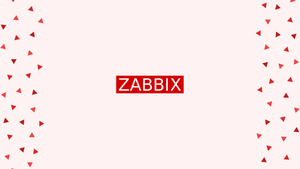Introduction
The world of monitoring and alerting systems can be complex and overwhelming without a clear understanding of key terms and concepts.
Here we have explained all the important terms related to monitoring, alerting, and performance optimization. Enhance your understanding of Zabbix and boost your knowledge of monitoring systems effortlessly.
Zabbix Terms
A
Action: A predefined method of responding to an event. An action typically comprises operations (such as sending a notification) and conditions that dictate when these operations are executed.
Agent Autoregistration: The automated process where a Zabbix agent is registered as a host and then used to perform monitoring.
D
Dashboard: A customizable area of the web interface that presents summaries and visual representations of crucial data using visual elements known as widgets.
E
Encryption: Enabling encrypted communication between Zabbix components (server, proxy, agent, zabbix_sender, and zabbix_get utilities) through the Transport Layer Security (TLS) protocol.
Escalation: A custom workflow for executing operations within an action, consisting of a series of steps that may include sending notifications or running remote commands.
Event: An individual instance of something that requires attention, such as a trigger changing state or a discovery/agent auto-registration event occurring.
Event Tag: A predefined identifier for an event. It can be utilized in event correlation, permission management, and other related processes.
Event Correlation: A technique for linking issues to their solutions in a flexible and accurate manner. For instance, you can specify that an issue identified by one trigger can be resolved by another trigger, even if it employs a different method of data collection.
F
Frontend: The web-based user interface provided as part of the Zabbix software.
H
Host: Any physical or virtual device, application, service, or any other logically-related group of monitored parameters.
Host Group: A logical collection of hosts. Host groups are utilized to assign access permissions to different user groups for the hosts.
I
Item: A specific data point that you wish to retrieve from a host, a data metric.
Item Prototype: A metric with configurable parameters for low-level discovery. Once discovered, these parameters are automatically substituted with real values, initiating data collection for the metric.
L
Low-Level Discovery: Automatic detection of low-level entities on a specific device (such as file systems, network interfaces, etc.).
Low-Level Discovery Rule: A collection of specifications for automatically discovering low-level entities on a device.
M
Media: A method for sending notifications; a notification delivery channel.
N
Network Discovery: Automatic detection of network devices.
Notification: A message about a specific event that is sent to a user through the selected notification channel.
P
Problem: A trigger that is in a state of "Problem".
Problem Update: The problem management capabilities offered by Zabbix, including adding comments, acknowledging issues, changing severity, and manually closing problems.
R
Remote Command: A predefined command that is automatically triggered and executed on a monitored host based on certain conditions.
T
Template: A collection of entities (items, triggers, graphs, low-level discovery rules, web scenarios) that are prepared to be applied to one or more hosts. The purpose of templates is to expedite the deployment of monitoring tasks on a host, as well as to facilitate the implementation of mass changes to monitoring tasks. Templates are directly linked to individual hosts.
Template Group: A logical organization of templates. Template groups are utilized to assign access permissions to different user groups for the templates.
Trigger: A logical statement that establishes a threshold for identifying issues and is employed to assess data received in items. When the received data surpass the threshold, triggers transition from an 'Ok' to a 'Problem' state. Conversely, when the received data fall below the threshold, triggers remain in or revert to an 'Ok' state.
Trigger Prototype: A trigger with certain parameters as variables, prepared for low-level discovery. After the low-level discovery process, the variables are automatically replaced with the actual discovered parameters, and the trigger begins evaluating the data. Additionally, prototypes of other Zabbix entities, such as graph prototypes, host prototypes, and host group prototypes, are also utilized in low-level discovery.
V
Value Preprocessing: A modification applied to the received metric value before storing it in the database.
W
Web Scenario: A series of one or more HTTP requests used to verify the availability of a website.
Widget: A visual element that presents specific information from a particular source (such as a summary, map, graph, clock, etc.) and is utilized within the dashboard.
Z
Zabbix Agent: A deployed process on monitoring targets that actively monitors local resources and applications.
Zabbix Agent 2: A next-generation Zabbix agent designed to actively monitor local resources and applications, enabling the utilization of custom plugins for monitoring purposes.
Zabbix API: The Zabbix API enables the utilization of the JSON RPC protocol to create, update, and retrieve Zabbix objects (such as hosts, items, graphs, and more) or execute custom operations.
Zabbix Server: The core component of the Zabbix software responsible for monitoring, communicating with Zabbix proxies and agents, evaluating triggers, sending notifications; acting as a central data repository.
Zabbix Proxy: A process that can collect data on behalf of the Zabbix server, thereby offloading some processing workload from the server.
Guide to Install Zabbix
Ready to dive into using Zabbix? Ensure you have it installed correctly by following these detailed installation guides tailored to different distros.
With these installation guides, you'll be up and running with Zabbix in no time!

